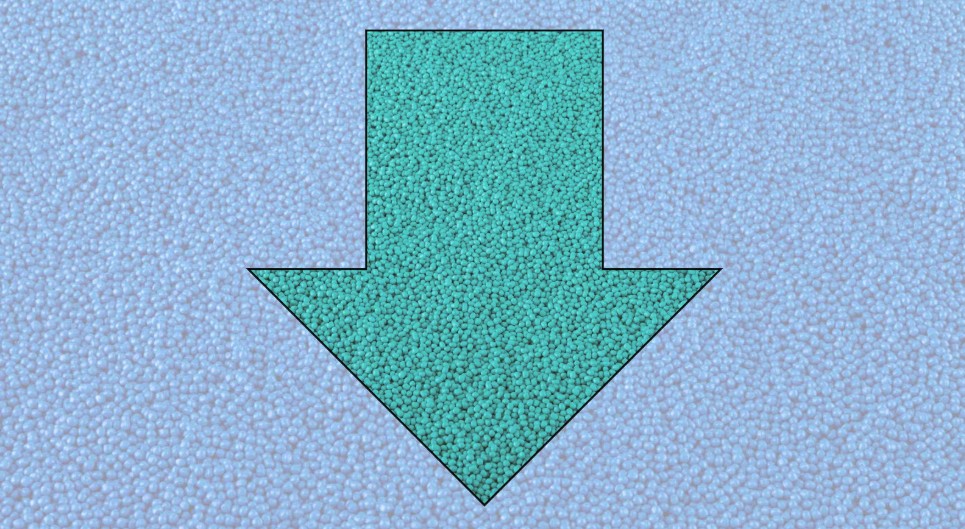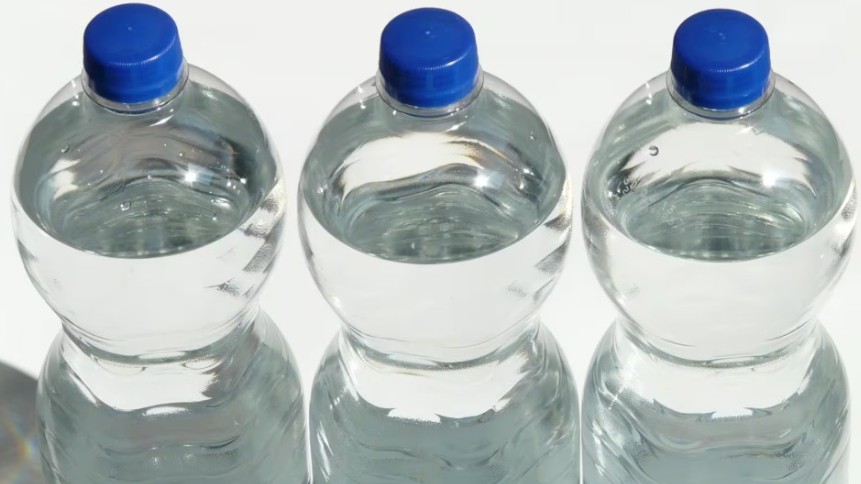Market trends
Polymers come into the equation for safety in healthcare
작성자 : Ms. Kang
2017-04-07 |
조회 : 5757
China Plastic & Rubber Journal (CPRJ) - Dec 2016 Issue
Source:China Plastic & Rubber Journal
By Victor Cheng
An aging global population leads tostronger demand for healthcare solutions that are both safe and easy to use.The industry is turning to the plastics industry that can help manage costswhile meeting the performance and safety requirements.
▲ The housing of the VAX-ID vaccination device is made of SABIC's PP.
By 2050, it is anticipated that approximately 2 billion of the world's population will be elderly (60 years and older), according to the World Health Organization (WHO), and 1 billion people will be waiting to be integrated into the healthcare system.
In mature economies, disease prevention and self-medication in aging populations will drive the need for low-cost, easy-to-use devices. Meanwhile, developing economies will present great opportunities for medical device manufacturers – but equipment must combine high performance with affordability.
Vaccination becomes more efficient
For example, Novosanis, a Belgium-based device developer and producer active in the prevention, detection and treatment of infectious diseases and oncology, turned to SABIC when it created the VAX-ID vaccination device.
SABIC’s PCGR40, a polypropylene (PP) resin, is used for the housing material for a short, thin, almost invisible needle that can be used to administer vaccinations that penetrate only 1mm under the skin, lessening the stress of receiving a shot.
As explained, this ultra-clear material with enhanced flow provides an extra level of patient safety due to its transparency and is compliant with EU and US medical regulations.
The easy-to-use device is dose-sparing, with only 10% of the dose needing to be injected compared to regular flu shots in the muscle, which means more people can be vaccinated using the same amount of antigen.
It doesn’t matter what kind of polymers are used, the materials chosen for medical applications must be biocompatible, impact resistant, easy-to-clean, as well as resistant to chemicals, aesthetically pleasing, lightweight and sustainable.
"Unbreakable" alternativet to glass syringe
Cyclic olefin copolymer (COC) is a relatively new class of polymers as compared to commodity plastics such as PP and polyethylene (PE). This newer material is an interesting plastic alternative to time-tested glass syringes due to the growing demands of novel agents on their primary packaging.
Syringes made of this material are resistant to breaking, as transparent as glass and hardly interact with the packaged medications at all. Thanks to the use of injection molding, the design boasts especially tight tolerances. Its precise geometry also reduces dead volume, leaving behind less of the expensive medication in the syringe.
Plastikos Inc, a custom injection molder, and its sister mold making company Micro Mold, both based in the US, have successfully commercialized disposable cartridge components made of COC for wearable drug delivery devices for medications such as insulin and pain medicines.
The precision disposable cartridges, which consist of several parts molded of TOPAS COC from TOPAS Advanced Polymers, are manufactured under strict performance qualifications including highly challenging tolerance levels and multi-cavity tooling.
“In these highly demanding applications, we are able to push the limits in terms of precision molding because of the broad material and process know-how we bring to the table,” said Rob Cooney, Manufacturing Manager for Plastikos.
The project included the design and construction of multi-cavity molds that range up to 32 cavities with fully interchangeable inserts among all cavities. To further mitigate the risk of shipping a single defective part, every cavity on each mold was designed and built with a cavity pressure sensor. This mold sensor technology is used to monitor every cycle in production and provides 100% traceability.
Plastikos worked with TOPAS Advanced Polymers to produce complex geometries and tight tolerances down to less than 0.025mm. “TOPAS COC fills a vital role in the disposable cartridge because of its repeatable performance in an industry where precision means everything. It’s a well-respected material because of its drug compatibility and other high-performance attributes,” said Dan Snyder, Technical Sales Manager for Plastikos.
TOPAS COC provides purity, drug compatibility, biocompatibility, and dimensional stability. Unlike other engineering thermoplastics or glass, it offers a non-ionic, minimally reactive surface. This non-polar substrate does not promote adsorption, denaturation, aggregation, or precipitation.
Gerresheimer uses COP for production of its new Gx RTF ClearJect syringe.
In comparison to the similar material COC, cyclic olefin polymer (COP) features even greater tensile strength, fracture strain, flexural strength and impact resistance. Such material using a single type of monomer is chosen by German medical device producer Gerresheimer for its new Gx RTF ClearJect syringe.
Since the entire syringe including the insert-molded cannula is produced in a single step, the product is free of tungsten and adhesives in addition to its metal ion-free nature.
Medications for cancer therapy, for example, can be extremely aggressive to the point where the break resistance of a syringe is a decisive criterion for selection. Innovative biotech medications, on the other hand, are often effective in the smallest of doses and are frequently very expensive. Any interaction with the syringe material must be ruled out here.
COP has a high pH tolerance and, unlike glass, does not change the pH value while in storage. The oxygen permeation rate is low in comparison to other plastics, and the values for extractables and leachables are low. The syringes are siliconized with a precisely controlled amount of high-viscosity, and thus low-particle, Dow Corning 360 MD (12,500 cSt) silicone oil to ensure optimum functioning.
Precise dimensions and siliconizing ensure reliable syringe functioning with low breakaway and gliding forces and minimal force required to pull-off the needle shield. The syringes are suitable not just for packaging aggressive or toxic materials, but also for use in autoinjectors thanks to their ruggedness and precise geometry.
Making life easy for elderly
It is common for adults to consume nutritional supplements such as vitamins or minerals, often sold as effervescent tablets. These consumers are usually 60 years or older, the so-called elderly. However, it could be a difficult task to open conventional effervescent packaging as they lose their strength.
Sanner’s new FOG 27 closure is easier to open than conventional effervescent packaging.
According to the German Federal Association of Senior Citizens’ Organizations (BAGSO), more than 90% of senior citizens struggle with opening consumer packaging in general; three quarters criticize the handling properties of opening mechanisms in particular.
“For producers of food supplements this is a decisive factor,” said Ursula Hahn, Product Manager at Sanner. “In case of bad experiences with the packaging, repurchase rates decline considerably.” To find a remedy, the German company has developed the new FOG 27 closure.
A comparative study conducted by the market research institutes Quo Vadis and Packaging Intelligence surveyed 120 people in charge of their respective housholds, 60% women and 40% men, who purchase and consume vitamin, mineral or painkiller tablets two to three times per month.
87% of the participants confirmed the intuitive opening of the user-friendly FOG 27 closure. Apart from the easy removal of the warranty band, testers appreciated the painless, single-handed opening. They neither complained about pressure marks on their thumb, nor about aching fingers.
As far as opening time is concerned, participants required approximately a third of the time to open the FOG 27: 9.2s instead of 25.8s for conventional closures. Moreover, the amount of physical effort needed for the first opening is significantly lower: 12 newton instead of 36 newton.
Sanner's FOG 27 closures can be incorporated with its Brilliance Tubes, which are decorated using In-mold Labeling (IML) technology.
A safer approach concerning desiccants
Drop-in style desiccants, such as canisters and packets, are the most widely used method of controlling moisture in nutraceutical and pharmaceutical bottle packaging applications.
Desccant canister with bright red labeling to avoid mistaking.
Switzerland specialty chemicals company Clariant, through its Healthcare Packaging business unit, has introduced desiccant canisters with bright red labeling to better differentiate them from drug products.
Displaying an easy-to-understand pictogram and the words “Do Not Eat” in multiple languages, they offer another layer of safety for consumers.
“All desiccant canisters are marked with warnings to help avoid accidental ingestion,” explained Philippe Depois, Head of Sales, Clariant Healthcare Packaging. “However, depending on the color of the drug there may not be a sharp contrast. The distinctive and vibrant color of the red canister label can help patients more easily recognize the desiccant.”
The new labels are made with materials compliant with EU and US Food & Drug Administration (FDA) regulations and include an outer varnish coating, so ink is not in direct contact with the drug. The canister labels can also be customized for specific color-differentiation or specific branding.




















